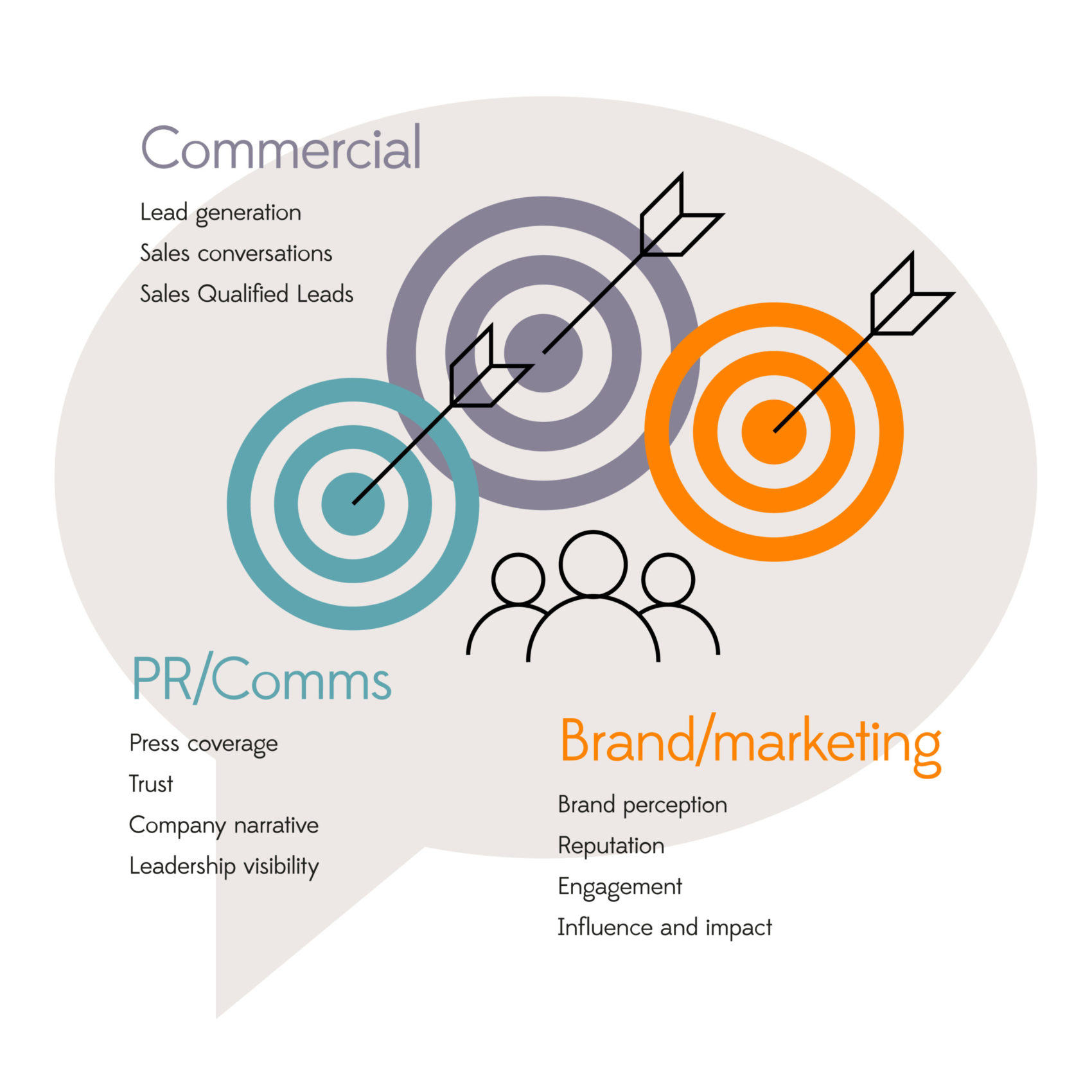What’s at stake: Why stakeholder alignment is your best thought leadership bet
Sean Kearns
Stakeholder engagement is not a phrase that gets the pulse racing. But it is the kind of necessary, behind-the-scenes work that creates a winning thought leadership campaign.
For any major project – professional or personal – it pays to listen widely and embrace opposing views. Thought leadership campaigns are no different.
Companies often rush into campaigns off the back of a great idea – a collective “eureka!” moment. But the idea, however big and clever, gets you only so far. Too often, consensus on a sharp angle is not matched by agreement about what the campaign is trying to do. Who is it for? What are we actually going to do with it? And how will we measure its success?
Usually, the brand, comms, sales and leadership teams come together at the outset of a campaign. But they don’t always agree on what the campaign should achieve. Instead of being glossed over, the differences need to be unpicked.
It might be slow and painful, but it is worthwhile graft – and will become even more important as new stakeholders and storytellers emerge from different parts of the organisation. This is one of the best ways to integrate the culture of thought leadership into the fabric of a business.
Mould consensus
If you fail to agree on strategic goals, the campaign will be pulled in multiple directions. Instead, try to align the views of the different groups. That does not mean having to please them all — stakeholder alignment is about moulding consensus.
It is also possible to agree on the overall goals while accepting that individual needs — of the head of comms and head of BD, for instance — will be very different. This is especially true of global campaigns. In the course of a pandemic, for example, when regions and countries are recovering at very different speeds, one size has never been so ill-fitting.

Be sure that you fully understand who your stakeholders are across the business, as well as their goals and objectives. Learn more about our stakeholder alignment work here.
By moulding consensus, you are giving your campaign the best chance to create its own impetus. My colleague Joe Dalton put it best in one of FT Longitude’s most-read opinion pieces:
“Engaging internal stakeholders at the early stages of the project allows them to follow its progress and develop a sense of shared ownership, and will build momentum that pulls others in as the campaign comes to fruition.”
There are three ways that you can make stakeholder alignment an essential process — if not necessarily always an enjoyable one.
-
- Be clear on strategy vs tactics
Engagement takes place at two levels. Everyone must first agree on the overall direction of the campaign, but each team might use it and measure its effectiveness in different ways.
This distinction helps to guide the make-up of the content plan (which pieces are more focused on awareness, and which are aligned with product), and the subsequent process of reviewing and refining the storylines.
-
- Appeal to reason and emotion
You will need more than cold, hard facts to persuade sceptical stakeholders. This is where the think, feel, do model can be helpful. It is a great way to force team members to think more deeply about their priority audiences and why the campaign will matter to them.
-
- Show your working-out
Thought leadership campaigns take inevitable twists and turns, and it can be helpful to go back to the beginning. Why were these sectors chosen over those? What were we trying to achieve with this asset? How does this insight relate to our previous campaigns?
If you have taken time to map audience needs and understand your various commercial imperatives, then you will have a trail of evidence that will help you to make quick decisions that could make all the difference between success and failure.
The next time you hear the term ‘stakeholders’, it could be helpful to reflect on why it generates strong reactions. And it might be worth considering its other meaning: the holder of stakes in a wager.
We may have updated our understanding of the word, but we can still take unnecessary gambles on our thought leadership campaigns. What we at FT Longitude have learnt from a decade of working with stakeholders is that if we do not engage the right people right at the start, the odds are likely stacked against us.
Do you want to hear more about how stakeholder alignment fits into a wider, comprehensive thought leadership strategy? Get in touch here.
Speak to the team
We’ll help you to navigate and overcome any challenges you currently face and learn how to get more out of your content.
Book a meeting
About the author: Sean Kearns
In his role as strategy and innovation director, Sean is responsible for spearheading the growth, quality and relevance of FT Longitude’s products and services. The underlying goal is always the same: to increase the value to clients and their most important audiences. Sean also leads our strategy division, ensuring that every campaign is guided by intelligent planning and creative clarity.
As well as being former editorial director and editor-in-chief at FT Longitude, Sean has 20 years’ experience of creating strategic content across a range of sectors and senior editorial roles.
 |
Tel:
+44 (0)20 7873 4770
|
Tel:
+44 (0)20 7873 4770


